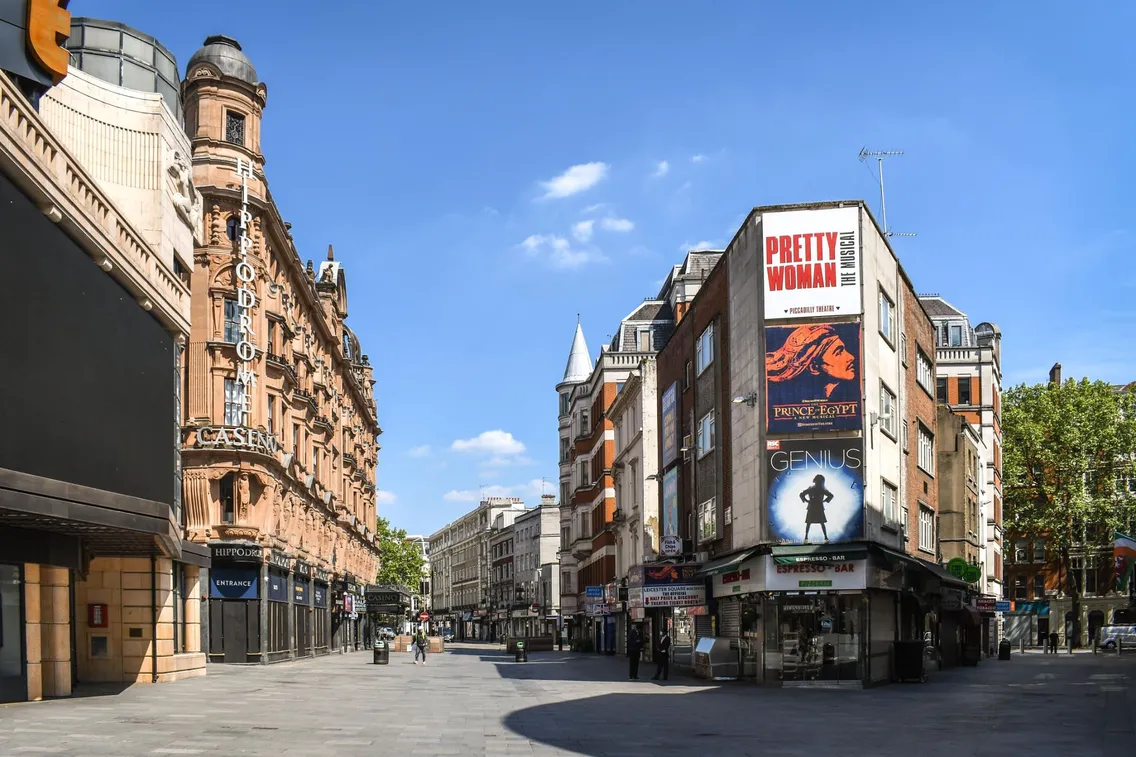28 July 2020 — By Emily Brazee
Recording London's soundscapes, past & present
In 1928, Daily Mail recorded the loud hustle and bustle of London to show its effects on mental health. Almost a century on, String and Tins recorded the contrasting silence of the 2020 lockdown.
Anyone who has known London, whether it be for the briefest visit or for their entire life, would likely support the claim that as enchanting as the hustle and bustle of the capital can be, it can also be extremely loud. Sometimes this volume of noise can even be detrimental to people’s mental and physical health.
This is why in the autumn of 1928 the Daily Mail led a campaign calling for noise restrictions on London's increasingly loud streets. In partnership with Columbia Graphophone Company, they recorded five central London locations with the aim to provide objective evidence of the concerning rising levels of street noise that experts could analyse and study. The goal was to devise ways of curbing “this real menace to public health” (Daily Mail, 1928).
“We have become so used to the perpetual noise around us that many of us fail to appreciate what our poor brains are being called upon to endure”
Daily Mail, 6 September 1928

North side of Leicester Square in 1928.
Listen to sounds of London from 1928 for the first time
The five central London locations recorded were Whitechapel East, St George’s Hospital (Hyde Park Corner), Leicester Square, Cromwell Road and Beauchamp Place in South Kensington. Though considered “portable”, the 1928 recording process was laborious. The production team needed a whole room to set up the equipment in each location. A narration of each location and specific sounds was provided by Commander Daniel RN DSO, who can be heard throughout the recordings. The recording process took place across roughly two weeks and resulted in 17 gramophone 78rpm records.
“That was a large lorry with building materials, very noisy. There’s a motor bicycle without a proper silencer!”
Commander Daniel RN DSO, 1928
On 4 September 1928, the Daily Mail wrote: “Those who cannot afford the time to travel about the city to hear for themselves how ear-splitting the traffic din has become will be able to have the noises brought to them so that they may be analysed and studied. It is confidently expected that a surprising proportion of them will be found to be wholly unnecessary and therefore preventable.'
Though the recordings were submitted to the government upon completion of the project, only the first record was broadcasted by the BBC. The rest of the records have never been aired or made available to listen to in their entirety – until now.
Central London soundscape, 1928
Sounds of London during lockdown in 2020
As the first ever recorded soundscapes of London, the 1928 recordings have been a significant part of our collection since they came to the museum that year. To complement them, our team wanted to make a record of the rare and extraordinary sound of silent London streets during the Covid-19 lockdown – a memory of this strange period that will be shared by many Londoners.

An empty Bury Street in 2020. This photo was taken as part of a series by Damien Hewetson, capturing London during lockdown.
In April 2020, we launched the Collecting Covid project, and our Digital Curator Foteini Aravani saw an opportunity to respond to those early recordings. “The 1928 anti-noise campaign occurred when the effects of sound pollution in central London were only starting to be understood. Almost a century later, sound levels in the capital are still an issue despite existing legislation, but the marked reduction in street noise has become a distinct aspect of London in lockdown. We felt it was our responsibility to capture this rare and significant moment to not only contrast the 1928 recordings in our collection, but to also provide a record of London’s rarely silent streets for future generations,” she said.
London soundscape, 2020
“The overall impression left by these records is that motor traffic sounds much the same now as it did seventy years ago; with the exception of tram noises…”
P Copeland, Aural Archaeology, Playback magazine
Foteini approached Will Cohen of String and Tins, who were already recording different areas of London in lockdown. She suggested collaborating on a project to capture the same locations as the 1928 recordings, but in the relative silence of May 2020 at the height of lockdown. Will did this through binaural recordings, a method of recording sound that uses two microphones arranged with the intent to create a 3D stereo-sound sensation for the listener.
Alongside the modern recordings, photographs of the areas and the almost-empty streets in 2020 were captured by photographer Damien Hewetson and are now in the museum’s collection.
Emily Brazee is Media Officer at London Museum.



